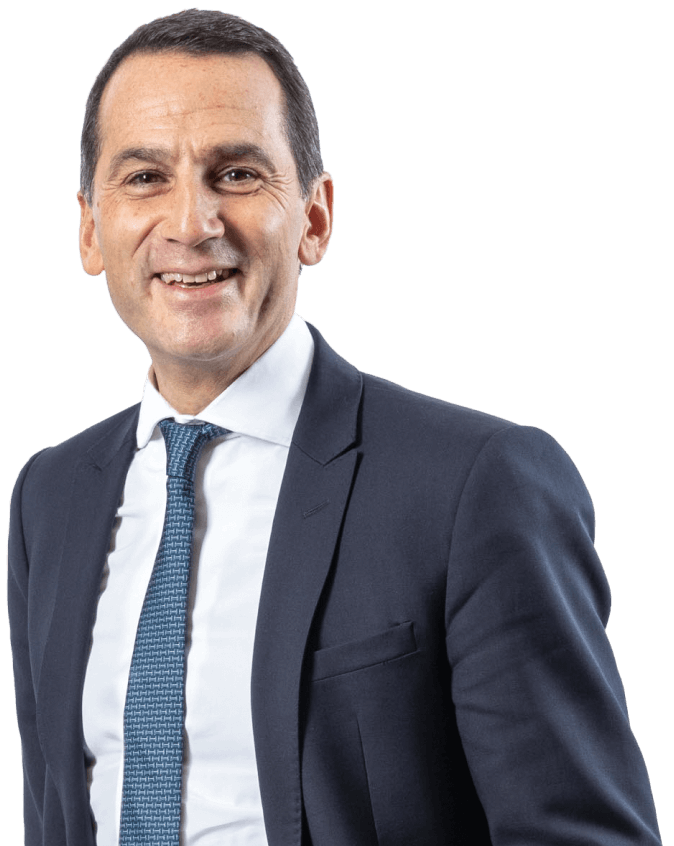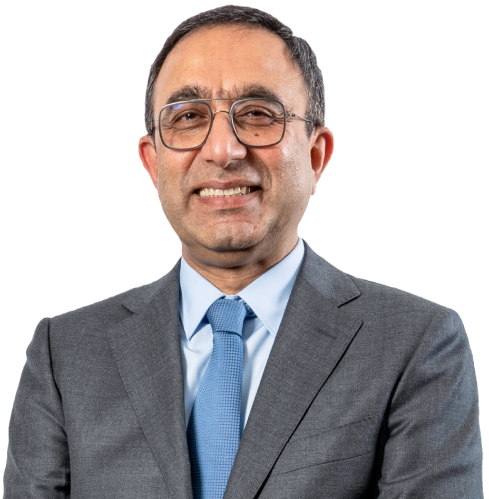
Sustainable Future
Building a Sustainable Future is about seeking to actively migrate consumers away from cigarettes and to smokeless alternatives sustainably, responsibly and with integrity.
Science will be a primary driver of our efforts, supported by more active external engagement and regulatory focus, while embedding sustainability across our organisation.
Tobacco Harm Reduction Acceptance
A Better Tomorrow™ through THR
The best choice any adult smoker can make will always be quitting combustible tobacco products completely. Yet many do not.
Our ambition for A Better Tomorrow™ is to reduce the health impact of our business via Tobacco Harm Reduction (THR) to help Build a Smokeless World.
Shaping the Landscape
THR and nicotine
Societal sentiment towards nicotine will play an important role in THR. Nicotine is recognised by several regulators (including the U.S. FDA) and public health stakeholders (including the UK Royal College of Physicians) as not being the cause of smoking-related diseases (which are caused by smoke toxicants).

Dear Fellow Shareholders
2022 marks a year of great progress against the strategy at BAT, given the backdrop of an increasingly complex external environment. I am proud of the delivery of the business in 2022.
Navigating a new economic cycle, characterised by rising inflation, higher interest rates and a tight labour market, has required the business to be more adaptable than ever.
Such complexities have been exacerbated by international conflict, political instability and supply chain constraints. In response, BAT has increased its focus on driving both a step change in New Categories and value from the combustibles business.
I believe BAT’s strategy gets the balance right between these two drivers of value. On top of that, pursuing greater synergies and simplification across the business has delivered further savings for re-investment.
Over the last year, the business has demonstrated the agility required to adapt to a changing external environment.
One tool at our disposal is our active capital allocation framework, introduced in 2021, which allows us the flexibility to take into account macro and fiscal developments to deliver long-term value.
Progressing With Purpose
As a Board, our role is to work to ensure BAT continues to deliver for the consumer, investors and our wider stakeholders.
With international travel possible once again, I have been delighted to see first-hand how our A Better Tomorrow™ corporate purpose has become embedded across so many levels of the organisation.
As the business transforms, the goal of everyone across BAT is to maintain the high performance and rapid progress we have demonstrated since our A Better TomorrowTM journey began in 2020.
With our New Category revenue and consumers of Non-Combustible products targets approaching, now is the time to keep our momentum and focus.
We must provide even more adult smokers with a portfolio of products that are a better choice than cigarettes*†.
As we have said before, reducing the health impact of our business by offering consumers a greater choice of reduced risk*† products is a multi-year endeavour. It is unlikely to always proceed smoothly and may involve periods of turbulence owing to factors outside of our control. However, what is clear to me is that every level of the business is committed to delivering sustainable growth.
Driving ESG Progress
This year, we have taken the opportunity to embed sustainability reporting more extensively into our Annual Report. Ahead of forthcoming EU reporting requirements, we believe this new 'Combined Annual and ESG Report' provides a more holistic view of our business performance.
Sustainability and ESG have long been an intrinsic part of BAT’s DNA. We published our first Sustainability Report in 2001. Since then, the business has been repeatedly recognised for its sustainability achievements. This year alone, we received the highest award - gold class - in the S&P Global Sustainability Yearbook 2022, and were named a Climate Leader by the Financial Times.
As part of our commitment to the Un-backed Race to Zero campaign, BAT published its Low-Carbon Transition Plan in 2022. This important document outlines the actions the business will take to reach its climate targets. This includes halving absolute emissions across its value chain by 2030, from a 2020 baseline, and to be Net Zero across its value chain by 2050 at the latest.
This is the latest milestone in BAT’s journey to tackle climate change and to build A Better Tomorrow™. Crucially, targets and actions included in the Low-Carbon Transition Plan are in line with BAT’s ambitious 1.5ºC-aligned trajectory, approved by the Science Based Targets initiative in July 2022.
BAT is equally committed to protecting biodiversity. The COP-15 UN Biodiversity Conference took place in Canada in December 2022 and BAT joined more than 300 leading companies in signing Business for Nature’s call to protect and restore biodiversity.
The need for mandatory requirements for businesses and financial institutions to disclose biodiversity impacts has never been clearer. Biodiversity and climate are inextricably linked and it is only through creating a level playing field for businesses that we hope to see meaningful progress on protecting biodiversity.
Ethos & Culture
I would also like to reflect on how important BAT’s ethos and culture is to delivering BAT’s future. After all, our people are a key stakeholder group; explicitly called out when we talk about creating sustainable, multi-pronged value.
In many ways BAT has a remarkable and unique culture: truly global, immensely diverse and marked out by a blend of new talent and capabilities, alongside long-standing experience. Of course, that culture needs nurturing and cherishing.
My Board colleagues and I have dedicated significant time this year to understanding that culture better and fostering its development with management. We are committed to making sure it develops through building on its provenance while also being contemporaneous and ‘fit’ for the challenges of the world today. We will continue to reflect further on that as part of the Board’s programme through 2023.
Dividends
The Board has declared a dividend of 230.9p per ordinary share, payable in four equal instalments of 57.72p per ordinary share, to shareholders registered on the UK main register or the South Africa branch register and to American Depository Shares (ADS) holders, each on the applicable record dates.
The dividends receivable by ADS holders in US dollars will be calculated based on the exchange rate on the applicable payment dates.
Further information on dividends can be found on pages 34 and 35.
Board Changes
I was pleased to welcome Véronique Laury to the Board in September 2022. Véronique joined as an independent Non-Executive Director and member of the Nominations and Audit Committees.
With an extensive career in consumer goods, including Kingfisher plc for over 15 years where she was Group CEO between 2014 and 2019, Véronique brings with her impressive international, strategic, transformation and digital experience. I look forward to her contribution as we accelerate our strategy to build A Better Tomorrow™.
Confidence in BAT's Team
I have full confidence in the Management Board of BAT and in the leadership of Jack. I know that, as a team, they will continue to lead the accelerated transformation of BAT at pace.
Each and every one of the people across BAT deserves huge credit for the achievements of 2022. In testing circumstances, they have demonstrated resilience, dedication and an ability to adapt to change. On behalf of the Board, I offer them my thanks.
My Thanks
In an increasingly complex world, BAT's North Star remains its purpose – to build A Better Tomorrow™. To succeed in delivering this, we must continue to win and nurture the trust of all our stakeholders, including shareholders.
I am grateful to everyone who has shared in our transformation journey so far – equally so to those new shareholders who have joined us on the journey ahead.
Developments over the last few years have shown that it will not always be straightforward. However, with your support, I am confident that BAT will continue to transform at pace while delivering multi-stakeholder value long into the future.
Luc Jobin
Chair
Notes:
* Based on the weight of evidence and assuming a complete switch from cigarette smoking. These products are not risk free and are addictive.
† Our Vapour product Vuse (including Alto, Solo, Ciro and Vibe), and certain products, including Velo, Grizzly, Kodiak, and Camel Snus, which are sold in the U.S., are subject to FDA regulation and no reduced-risk claims will be made as to these products without agency clearance.


2022 was another successful year in our transformational journey.
With value delivered from combustibles and improving financial delivery from New Categories, we believe we are well placed to navigate the turbulent macro-economic environment.
Furthermore, while translational foreign exchange has negatively impacted the value of our borrowings (in sterling terms), we believe our continued cash generation places the Group in a strong position for future growth.
Revenue Higher Driven by New Categories
Revenue increased 7.7% to £27,655 million compared to 2021 (while 2021 was marginally lower than 2020, down 0.4% to £25,684 million).
Revenue from New Categories was up 40.9% in 2022 and 42.4% in 2021. Combustibles pricing remained strong, with Group price/mix of 4.6% in 2022 compared to 4.3% in 2021.
Foreign exchange movements affected the Group's reported results in both periods, being a tailwind of 5.4% in 2022 and a headwind of 7.3% in 2021.
On a constant currency basis, revenue was up 2.3% in 2022 and 6.9% in 2021.
Improving Financial Performance from New Categories Drives Growth
Profit from operations increased 2.8% to £10,523 million, with 2021 up 2.7% to £10,234 million. In 2022, higher revenue, a further reduction in losses from New Categories and a translational foreign exchange tailwind of 7.0% were offset by higher adjusting items, which were largely due to:
- The charges recognised related to the proposed transfer of the Russian (and Belarusian) business of £612 million;
- Restructuring and integration charges, including in respect of Quantum, of £771 million (2021: £150 million), as we streamline our business to drive agility, and further enhance organisational capabilities as we move forward into the next phase of our transformation;
- A charge of £450 million recognised in respect of the investigations by the United States Department of Justice (DOJ) and the United States Department of the Treasury’s Office of Foreign Assets Control (OFAC) into alleged historical breaches of sanctions; and
- A charge of £79 million related to the conclusion of the investigation into alleged violations of the Nigerian Competition and Consumer Protection Act and National Tobacco Control Act.
These were partly offset by a net credit of £460 million in Brazil related to the calculation of VAT on social contributions in prior periods (as the Group's litigation was successfully concluded in the year). Such adjusting items were higher than those recognised in 2021, which included a charge of £358 million related to the disposal of the Group's Iranian business. Our operating margin was consequently 170 bps lower at 38.1% in 2022 (2021: up 120 bps to 39.8%).
On an adjusted constant currency basis, profit from operations grew by 4.3% (2021: up 5.2%). This was driven by higher revenue, a reduction in losses of £578 million from New Categories and efficiencies delivered in both 2022 and 2021 as part of Project Quantum (which has delivered £1.9 billion of annualised savings since 2020).
Adjusted operating margin (at current rates) increased 150 bps to 44.9% (2021: down 70 bps to 43.4%), largely driven by the reduction in New Categories losses.
EPS Impacted by Substantial Adjusting Items, Partly Offset by FX Tailwind
On a reported basis, basic EPS was down 1.2% at 293.3p (2021: up 6.0% at 296.9p) with diluted EPS down 1.3% to 291.9p (2021: up 6.0% to 295.6p), as the impact of higher adjusting charges in 2022 more than offset the improved operational delivery and a translational foreign exchange tailwind.
Excluding the adjusting items and the effect of foreign exchange on the Group’s results, adjusted diluted earnings per share, at constant rates, increased by 5.8% to 348.1p, building on the 6.6% growth in 2021.
Strong Cash Generation But Currency Negatively Impacts Net Debt
We continue to focus on a balanced approach to deleveraging, while investing for the future and providing a return via dividends to shareholders.
The Group’s cash conversion ratio, based upon net cash generated from operations, was 99% (2021: 95%) and the operating cash conversion ratio was 100% (2021: 104%). The Group realised £10.4 billion (2021: £9.7 billion) of net cash generated from operating activities, or £3.1 billion (2021: £2.5 billion) of free cash flow after dividends – which is a measure the Group uses to assess total cash generated by the Group with which to repay borrowings.
Due to the relative weakness of sterling against the US dollar (currency headwind of £3,911 million), which more than offset the net repayment of borrowings in the year, in 2022, total borrowings (including lease liabilities) have increased from £39,658 million in 2021 to £43,139 million in 2022.
Despite the currency headwind on borrowings, we continue to deleverage, with an adjusted net debt to adjusted EBITDA ratio decreasing from 2.99 times to 2.89 times.
Our liquidity profile remains strong, with average debt maturity close to 9.9 years and maximum debt maturities in any one calendar year of around £4 billion. Our medium-term rating target remains BBB+/Baa1, with a current rating of BBB+/ Baa2*.
Net finance costs in 2022 were £1,641 million, an increase of 10.5% on 2021, which had declined to £1,486 million from £1,745 million in 2020. The increase in 2022 was partly driven by a foreign exchange headwind. On an adjusted, constant rate basis, net finance costs increased 2.5% in 2022 (2021: down 4.5%), driven by higher interest costs on debt issued in the year.
As part of the Group’s de-risking of future funding, during 2020, gross interest cover ceased to be a covenant in the Group’s debt facilities.
The Group has debt maturities of around £4 billion annually in the next two years. Due to higher interest rates, net finance costs are expected to increase as debts are refinanced.
Active Capital Allocation Framework
We are committed to our active capital allocation framework, which will deliver long-term value to our shareholders, driven by our cash flow generation and deleverage plans.
These include:
- Continuing to grow the dividend;
- Maintaining our target leverage corridor of 2-3x adjusted net debt / adjusted EBITDA;
- Potential bolt-on M&A opportunities; and
- Share buy-backs to enhance shareholder returns.
The Board will prioritise capital allocation opportunities each year in line with this new longer-term active capital allocation framework, while continuing to take into account macro-economic influences and potential regulatory and litigation outcomes.
At this time, the Board has decided to take a pragmatic approach. Given our incremental investment plans in 2023 to further accelerate our transformation, and in light of the uncertain macro-environment, higher interest rates, outstanding litigation and regulatory matters, the Board has decided to prioritise strengthening the balance sheet. This will provide greater business resilience while continuing to support future financial agility, as we aim to reduce leverage more quickly towards the middle of our target 2-3x corridor.
We have announced a dividend increase of 6.0% to 230.9p (with a dividend pay-out ratio of 62.2%).
Navigating the Near Term Challenges With Confidence
Our business is extremely well placed for the future.
With a diversified geographic and product portfolio, and a track record of delivering robust and consistent cash generation, we believe the Group is well positioned to continue to invest for future growth while navigating the near-term macro-economic uncertainties and challenges.
Tadeu Marroco
Finance and Transformation Director
Notes:
* A credit rating is not a recommendation to buy, sell or hold securities. A credit rating may be subject to withdrawal or revision at any time. Each rating should be evaluated separately of any other rating.

Leading in Sustainability and Integrity
As we transition from cigarettes to smokeless products, we are addressing not only our products' public health impact but also our other material sustainability1 topics.
Notes:
1. Compared to a 2020 baseline. Our near-term 2030 science-based targets comprise 50% reduction in Scope 1 and 2 and 50% reduction in Scope 3 GHG emissions, where Scope 3 emissions target includes purchased goods and services, upstream transportation and distribution, use of sold products and end-of-life treatment of sold products, which collectively comprised >90% of Scope 3 emissions in 2022.
* Based on the weight of evidence and assuming a complete switch from cigarette smoking. These products are not risk free and are addictive.
† Our Vapour product Vuse (including Alto, Solo, Ciro and Vibe), and certain products, including Velo, Grizzly, Kodiak, and Camel Snus, which are sold in the U.S., are subject to FDA regulation and no reduced-risk claims will be made as to these products without agency clearance.
Our ESG Roadmap
Our ESG Roadmap contains key goals and targets and metrics.
Notes:
◆2023 (2022 for Scope 3) metrics with independent limited assurance by KPMG in accordance with ISAE (UK) 3000; see page 119 of the Annual Report and Form20-F 2023 for a full list of assured metrics.@ Environmental and health and safety data is reported for the period 1 December 2022 to 30 November 2023. See page 115 for CO2e emissions reporting methodology.
1. Compared to a 2020 baseline. Our near-term 2030 science-based targets comprise 50% reduction in Scope 1 and 2 and 50% reduction in Scope 3 GHG emissions. Scope 3 emissions target includes purchased goods and services, upstream transportation and distribution, use of sold products and end-of-life treatment of sold products, which collectively comprised >90% of Scope 3 emissions in 2020.
2. Due to the complexity of consolidating and assuring Scope 3 data from our suppliers and value chain, this is reported one year later. In 2022 we further enhanced our Scope 3 calculation methodology leading to the reporting periods 2020 and 2021 being restated accordingly.
3. Our ambitions cover all tobacco we purchase for our products ('tobacco supply chain'), which is used in our combustibles, Traditional Oral and Tobacco Heated Products. Our metrics, however, derive data from our annual Thrive assessment, which includes our directly contracted farmers and those of our third-party suppliers, which represented over 94% of the tobacco we purchased by volume in 2023 ('Thrive Supply Chain').
4. In line with a reclassification of 'ongoing incidents' (which, from 2023 reporting will be included as an 'incident' when the final decision is issued), the 2022 number has been restated (three previously reported for 2022).
5. Consistent with previous years' reporting, cases are not included if investigations were not resolved at year-end.
